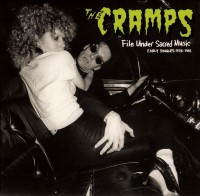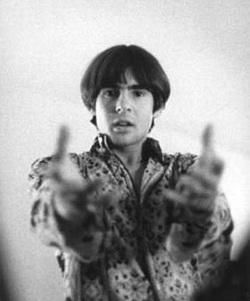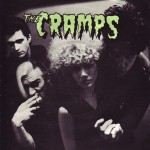-
Featured News
Marianne Faithfull 1946-2025
 By Harvey Kubernik
Singer, songwriter, actress and author Marianne Faithfull passed away on January 30, 2025.
In 2000 I discussed Faithfull with her first record producer Andrew Loog Oldham, the 1
By Harvey Kubernik
Singer, songwriter, actress and author Marianne Faithfull passed away on January 30, 2025.
In 2000 I discussed Faithfull with her first record producer Andrew Loog Oldham, the 1 -
Featured Articles
The Beatles: Their Hollywood and Los Angeles Connection
 By Harvey Kubernik
JUST RELEASED are two new installments of the Beatles’ recorded history, revised editions of two compilation albums often seen as the definitive introduction to their work.
Or
By Harvey Kubernik
JUST RELEASED are two new installments of the Beatles’ recorded history, revised editions of two compilation albums often seen as the definitive introduction to their work.
Or -
R.I.P. Richie Teeter
Ritchie Teeter, man of magnificent meter, held down the pound for the mighty Dictators during their most ferocious and fevered period, displaying a dexterity not common in most straight-ahead rock’n’roll. He also saddled the stool as touring member of Twisted Sister for a time, and did a spell with Tom Verlaine (Television), among others. Most prominently, he continually fostered the efforts of many aspiring noise-makers throughout his years, giving them the necessary tools to realize infamy. Luckily, he also contributed to a migh-tee radical catalog that’ll rattle our mortal brains for years to come. Below, Dictators guitarist Scott Kempner delivers a moving tribute to his long-time friend and bandmate. Following the article is a link to another Dictator-penned remembrance by Andy (Adny) Shernoff, info on Ritchie’s memorial fund, and a ‘Ritchie’s Golden Moments’ YouTube playlist as chosen by Scott. (jeremy nobody, esq.)
This morning, April 10th, 2012, Ritchie Teeter passed away from complications stemming from his battle with esophageal cancer. The news came down hard and unforgiving. Ritchie was our drummer from 1975–1978. Four years of tour, record, tour, record, etc. These were the peak years of the original band’s existence. Although Rich’s tenure as a Dictator officially came to an end in 1978, he had come back to do a bunch of “reunion” shows in the ‘80s. It was again a joy to share a stage with him, and relive his own unmistakable approach to the Big Beat. After that, though, we all seemed to lose touch with Rich, although I would occasionally run into him, the last time being at a Del-Lords show in the late ‘80s. Then, it was no contact until about eight months ago, when I learned of his illness, I knew enough was enough, and the long estrangement needed to end. I wrote him a letter at the last email address I had for him, and that began a series of great correspondence, rekindled friendship, and a final acknowledgment of the eternal bond we created by our extraordinary shared experiences. I only wish I had reached out earlier. Now this…
This is a dark and terrible day, the first such hit the Dictators family has taken. Forty years after the creation of our little band the first casualty is recorded. And dear God, it hurts. The cold glass of mortality thrown our way is a stark reminder of the inevitability of our fate and time here on God’s Golf Ball. What follows are some immediate memories and feelings about our fallen brother. Make no mistake, the Dictators are like the Mob, once you’re in, you’re in. Forever. DFFD.
THE CRAMPS – File Under Sacred Music: Early Singles 1978-1981

(Munster, Spain) 7” single boxset/CD
The Cramps may have swept to attention in the wake of the ‘70s punk rock wave, but they were of a different species entirely. This otherness is what makes the Cramps so special. By accident, design or mutated genetic disposition they were able to tap directly into the deep India-ink-black essence that lies at the core of all primal rock’n’roll. What they created with their best music and their live performances—that otherness—was something that existed out-of-time with the rest of the world—and certainly the rest of the music scene. The Cramps’ unique vision spawned hundreds of imitators, hopping blindly, stupidly like so many fleas on the back of a big hairy dog. The wanna-fleas may have grokked the mad rockabilly pulse or the voodoo mystique, but the vital essence of it was beyond their understanding. Only the Cramps themselves fully grokked that secret, sacred magic.
If you’d forgotten or, god forbid, never knew just how great the Cramps were, this 10-single vinyl boxset (also available in the more boring CD format) will set you straight in a hurry. Some of the very best of their earliest primal goo-goo muck is here: “The Way I Walk,” “Human Fly,” “Mystery Plane,” “Garbage Man,” “TV Set,” “Goo Goo Muck,” “New Kind of Kick”—the list goes on. Six of these 10 discs are splendid repros of the original 1978-81 singles; four are new pairings with specially-designed cover art in keeping with the all-important original aesthetic. The vinyl box also includes a nifty envelope stuffed with picture postcards.
Liner notes by original Legion of the Cramped fanclub prez Lindsay Hutton seal the deal for this box of Uranium-infused rock’n’roll juice that’ll provide thrills and chills for a million years to come. Sacred. (Mike Stax)
Review originally published in Ugly Things #33.
Davy Jones 1945-2012

David Thomas “The Manchester Cowboy” Jones’ first love was jockeying, a fitting choice for the height-challenged heartthrob, until the stage called him. A later American promo tour for Oliver! fated him with the divinity to appear on the Ed Sullivan Show the monumental date of February 9, 1964. From side-stage a teenaged Jones was bewitched by the Beatles making their American debut and found truly what pie he was a piece of.
Of the Monkees remarked Davy they were a “good garage band,” and perhaps that’s what endears them to UT readers, even those not hip to poppin’ bubblegum. While some of the Prefab Four later divorced themselves from the entity due to its synthetic, machine-made product value, Jones trudged along living and singing the hell out of those hits until he tragically left us. Those inescapable jams of childhood made me a believer, and I shall be to until the day I expire. Godspeed, King of the Wild Tambourine.
Below Michael Lynch pours his Monkee-lovin’ heart out, and a playlist to partake in compiled from Michael’s references and a few of my own. (jeremy nobody, esq.)
The short Monkee. The English Monkee. The cute Monkee. The one who got the girls. The one who played tambourine. The one who later called on Marcia Brady. However people remember Davy Jones, the point is, everybody will remember him.
An all-around entertainer, Davy already had racked up some success as an actor before Screen Gems made a Monkee out of him, most notably his Tony-nominated portrayal of the Artful Dodger in the Broadway production of Oliver! The success of Oliver! led him to try milking his teen appeal through American television guest spots (Ben Casey and Farmer’s Daughter) and, of course, records. 1965 yielded an album, David Jones, and three singles for Colpix, only one of which (“What Are We Going to Do”) charted, and at only #93. His luck changed that autumn when he was chosen as one of the stars of an impending sitcom about “four insane boys.”
